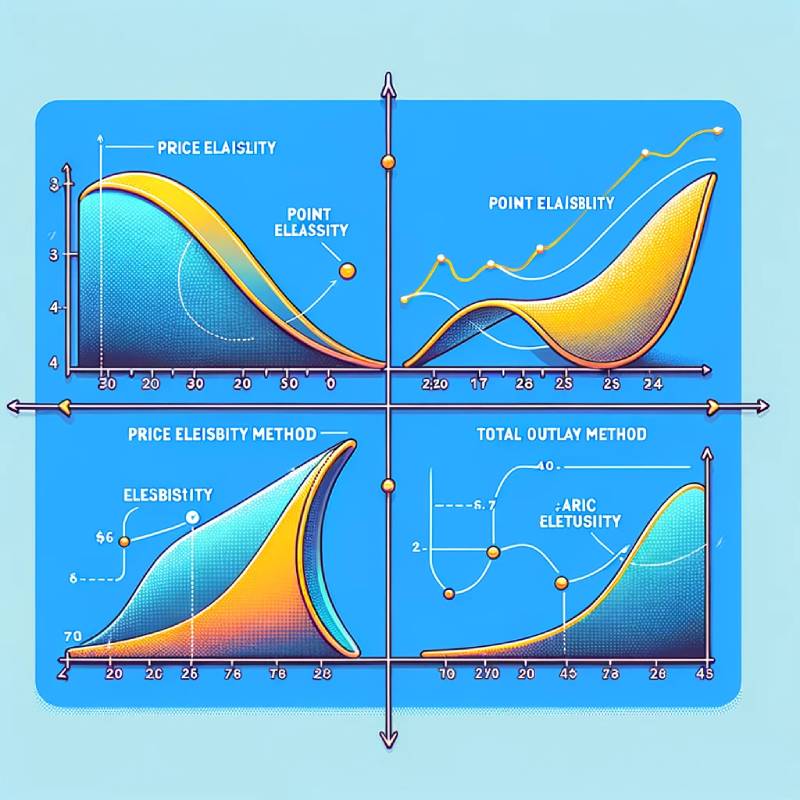Price elasticity of demand (PED) quantifies how the quantity demanded of a good changes in response to a change in its price. There are several methods to calculate PED, each suitable for different types of data and situations:
1. The Percentage Method (Arc Elasticity Method)
This method calculates the percentage change in quantity demanded in response to a percentage change in price. It’s the most common approach and is calculated using the formula:
\[ \text{PED} = \frac{\% \text{ change in quantity demanded}}{\% \text{ change in price}} \]
Where:
– \% change in quantity demanded = \(\frac{\text{New Quantity} – \text{Old Quantity}}{\text{Old Quantity}} \times 100\)
– \% change in price = \(\frac{\text{New Price} – \text{Old Price}}{\text{Old Price}} \times 100\)
This method is often used for calculating elasticity over a range of prices because it gives an average elasticity for the price range.
2. Point Elasticity Method
The point elasticity method calculates elasticity at a specific point on the demand curve using the derivative of the demand function with respect to price. It’s used when you have a continuous demand function. The formula is:
\[ \text{PED} = \left( \frac{dQ}{dP} \right) \times \left( \frac{P}{Q} \right) \]
Where:
– \(dQ/dP\) is the derivative of the quantity with respect to price (showing how quantity changes as price changes, at a specific point).
– \(P/Q\) is the price-quantity ratio at the point for which elasticity is being calculated.
3. Total Outlay (Expenditure) Method
This method involves observing changes in total revenue (or expenditure) that result from a price change and determining whether the demand is elastic, inelastic, or unit elastic. It’s based on the principle that:
– If total revenue increases when price decreases, demand is elastic.
– If total revenue decreases when price decreases, demand is inelastic.
– If total revenue remains the same when price changes, demand is unit elastic.
4. Geometric Method (Midpoint Formula)
The geometric or midpoint method is a variation of the percentage method that calculates elasticity between two points in a way that is independent of the direction of change. It uses the average of the initial and final quantities and prices to calculate percentage changes, thus addressing the issue of which point to use as the base for percentage changes:
\[ \text{PED} = \frac{\frac{Q_2 – Q_1}{(Q_2 + Q_1)/2}}{\frac{P_2 – P_1}{(P_2 + P_1)/2}} \]
This method is particularly useful for calculating elasticity over a segment of the demand curve and is symmetric, meaning it gives the same elasticity value regardless of whether you move from point A to B or from B to A.
Choosing the Method
– **Percentage and Geometric Methods** are most useful for empirical data from markets or experiments where specific changes in quantity and price are observed.
– **Point Elasticity Method** is ideal when dealing with theoretical demand functions or when precise elasticity at a specific price point is needed.
– **Total Outlay Method** provides a quick, intuitive assessment of elasticity but is less precise than the other methods.
Each method has its context and application, depending on the availability of data, the nature of the demand curve, and the specific requirements of the analysis.

